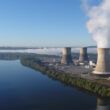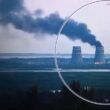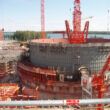Safety and carbon mitigation must be top energy priorities, not advanced nuclear energy projects
By Thomas B. Cochran, February 5, 2009
Going forward what should we do about the biggest issues that have plagued the nuclear power industry? They are–proliferation; the risk of another catastrophic nuclear plant accident; spent fuel/high-level waste disposal; and poor economics.
With respect to proliferation and spent fuel disposal, the Obama administration should terminate the reprocessing component of the Global Nuclear Energy Partnership (GNEP), which is irrelevant to the near- and mid-term decarbonization challenge and faces long-term uncertainties regarding operational reliability, economic viability, and international control on abuse of the technology for weapons. President Barack Obama should reinforce the current U.S. commitment to the more proliferation-resistant, once-through fuel cycle at home and abroad and focus on building cooperative international monitoring and controls that would ultimately enable both the elimination of nuclear weapons and the future deployment of a closed nuclear fuel cycle, should the latter’s technical and economic viability become apparent at some future date. Domestically, the federal government needs to begin identifying alternative geological disposal sites for the country’s nuclear waste to Yucca Mountain.
The most important factor affecting the safety of existing nuclear power plants isn’t their design, but the safety culture at the plant. It’s difficult to assess whether any of these nuclear plants is safe enough because the probability of a severe accident depends on many technical and human factors that are difficult to measure. Nevertheless, U.S. nuclear plants on the whole are safer today than they were two decades ago primarily because U.S. nuclear plant safety culture has improved. If another catastrophic nuclear accident occurs, it will likely be in one of several countries with demonstrably poor nuclear safety culture. Also, few, if any, of the states that are planning to construct their first nuclear power plant have adequate nuclear regulatory regimes and in several of these countries there is no evidence that a robust safety culture is in store. Thus, Washington and the nuclear industry should concentrate on improving the regulatory regimes and safety culture in these other countries.
The domestic nuclear power industry is confronting two big economic dilemmas. In the United States, new nuclear power plants are uneconomical when compared to other electricity generating technologies and improvements in end-use efficiency; and the unit costs of new nuclear plants are so high that they cannot be privately financed. It appears likely that construction of new plants will remain cost prohibitive until the price of carbon emissions exceeds $50 per ton of carbon dioxide. The nuclear industry, through its congressional boosters, has already received large federal subsidies and loan guarantees to support the construction of a few new nuclear plants. It has received additional subsidies from states and local governments.
Now the industry is returning to Congress for more taxpayer largess, claiming that it is needed to mitigate climate change and provide for jobs under the economic stimulus plan. We should reject this “lemon socialism” approach. The economically efficient way to mitigate climate change is to internalize the cost of carbon emissions through a cap-and-trade program or by carbon tax. We shouldn’t subsidize the construction of new nuclear power plants, thereby penalizing alternatives that can provide climate-change mitigation quicker, safer, and cheaper. Subsidizing new nuclear plants is one of the least productive means to create jobs or to stimulate the economy in the next year or two, a key criterion of the stimulus package.
An appropriate role for direct federal support of low-carbon energy is to underwrite research, development, and demonstration of meritorious new technologies that are unlikely to be developed by private industry acting alone, either because the return on the investment is too distant or because the investment risks are too high. Alternatively, society may reap benefits by using production or investment tax credits to more rapidly expand the market for beneficial emerging technologies, thereby driving down unit costs of production to a level that allows the technology to become self-sufficient in the marketplace.
Further subsidization of new nuclear power plants doesn’t meet either of these criteria. The first 6,000 megawatts of nuclear new-build capacity are already covered by a production tax credit comparable to wind, and sufficient loan guarantee authority ($18.5 billion) has already been made available to support construction of the first “new” Gen III+ reactor designs proposed for the U.S. market–the Toshiba-Westinghouse AP1000 and the GE-Hitachi Economic and Simplified Boiling Water Reactor. All other reactor designs proposed for construction in the United States either don’t qualify as innovative, have already been constructed elsewhere, or both.
Topics: Nuclear Energy
Share: [addthis tool="addthis_inline_share_toolbox"]














